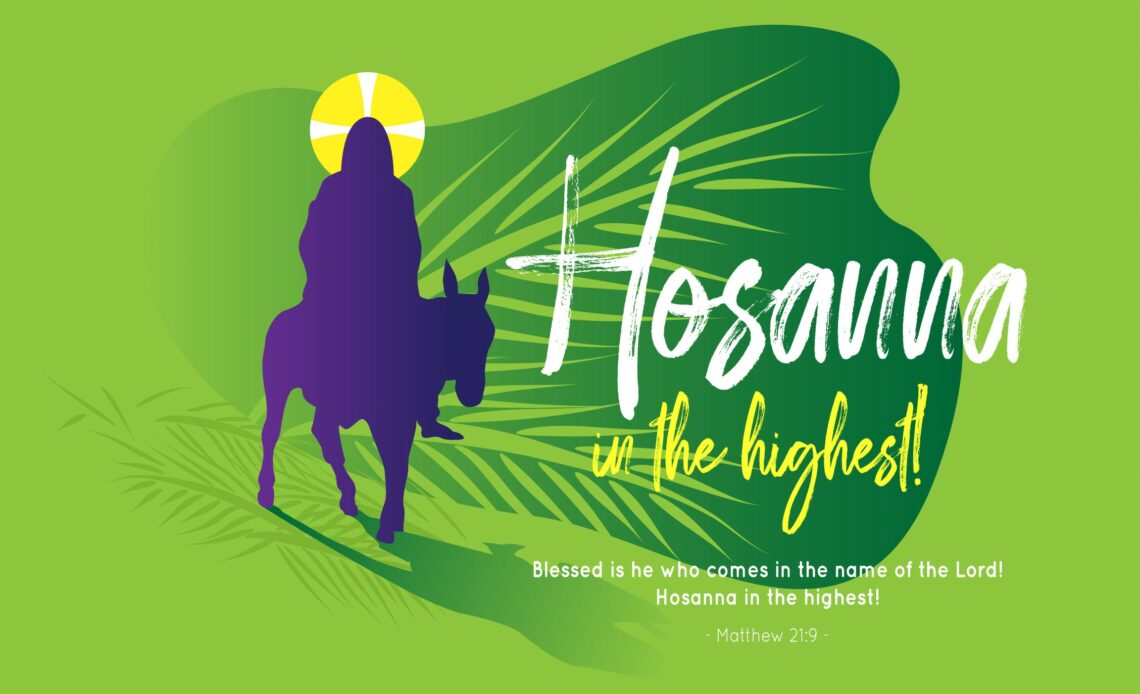The Coming of the Kingdom through the Suffering of the Savior
With Resurrection Day steadily approaching, it is fitting to prepare one’s heart for such a momentous occasion. Perhaps there may be no greater way of doing so than by meditating on the events leading up to Jesus’ death, burial, and resurrection. For 33 years, Jesus trod the earth, and for three of those years, He did so with His disciples.
Interestingly enough, in spite of Jesus’ forewarning His followers of His imposing death, it is as though they didn’t see it coming. While it is hard to find a perfect passage to usher in this celebratory and memorable time of year, it would seem fitting to begin with what is commonly known as Jesus’ Triumphal Entry.
The context of the claim
In Mark 11:1-11, the people yell emphatically, “…Hosanna; Blessed is he that cometh in the name of the Lord: Blessed be the kingdom of our father David, that cometh in the name of the Lord: Hosanna in the highest” (Mark 11:9-10). But what is the setting and context of such a great proclamation?
For starters, the Passover is steadily approaching, and, as was the custom, the people were arriving in advance. Great celebration would be taking place, but maybe more importantly for the Jew is the time of cleansing and purification to prepare for the sacrifice and the feast.
In this portion of Scripture, Jesus and His disciples are making their way to Jerusalem through the eastern gate. They travel by way of the path that leads to the Mount of Olives. Along the eastern slope of the Mount of Olives lie both Bethany and Bethphage. As Jesus and His disciples approach these towns, prior to Jesus’ entering into Jerusalem, Jesus tells some of His followers to go on ahead to one of these towns and get Him a colt.
They do as they are told, and Jesus is ready for His entrance into Jerusalem to celebrate Passover. Passover marked the greatest deliverance in all of history for the Jews, and it is no wonder that they are on the lookout for their Messiah on that blessed day. This time of year was shrouded in spiritual meaning and significance. Spirits were high, as were the emotions of the people.
So the disciples find Jesus His colt and then place their cloaks over the top of the unridden animal. Jesus mounts the colt and makes His way to Jerusalem. As He does, the people take note and begin crying out, “Hosanna.” The Scriptures tell us that these onlookers take off their cloaks and place them on the ground, while others scatter leafy branches along the dusty road.
Colts, cloaks, and branches
Great significance is embedded into the activities of Jesus’ entry into Jerusalem. Jesus truly is the Messiah, and there may be no better place to see this truth than in the fulfillment of messianic prophecy. While different numbers are thrown out there concerning how many prophecies Jesus fulfilled, what does seem clear is that He fulfilled over 300.
Judah was both a man and then later a tribe. In the Old Testament (OT), in Genesis 49:8-12, Jacob blesses his son Judah. He pronounces blessings such as the following: Judah’s brothers praising Judah, the other tribes bowing down to Judah, the scepter (kingdom and rule) being with Judah for eternity, and the people following Judah in obedience.
At the end of these blessings, it is possible that Jacob prophesies of the true vine, Christ Jesus, riding on (or being bound to) the colt in Mark 11. Jacob says, “Binding his foal unto the vine, And his ass’s colt unto the choice vine…” (Gen. 49:11).
Whether or not this is a direct reference is a little tricky to know for sure. Either way, Zechariah 9:9 is as clear as it gets. In this Scripture, Zechariah prophesies by the Holy Spirit that there will be a time of great rejoicing and shouting aloud. He says that this will be due to Israel’s King coming, and with Him, He will be bringing salvation.
But what would be one of the distinguishing marks of this coming King? Zechariah said that He would come humbly and riding on a colt/the foal of a donkey. When the crowds saw this, they would have had this verse readily on their minds. They would have seen Whom they believed to be their delivering King.
As the bystanders see Jesus riding on this colt into Jerusalem, they respond in Jewish traditional fashion by taking off their cloaks and laying them before the feet of Jesus. This practice can be seen plainly in the OT as Jehu was anointed the king of Israel. In 2 Kings 9, Jehu is pulled aside by one of Elisha’s servants and anointed king. He comes out where his fellow men had been waiting and tells them that Elisha’s servant just declared him as king. At this moment, the people bow before Jehu, take off their cloaks, and lay them at and underneath his feet. They blow the trumpet and proclaim that Jehu is now their king.
The kingship overtones of the Triumphal Entry cannot be overstated. It is a passage full of the Kingship of the Savior. Yet again, the people hail Him as their conquering King as they lay leafy branches (also known as palm branches) at His feet. While there was no command for the people to do so, Jewish tradition linked these palm branches to victory. These branches could be seen on their coins and had significant connections with victories such as that of the Maccabean revolt.
The King Who came to suffer
While the people were correct in assuming that Jesus was their coming King, they were incorrect in the way that they thought He would bring about His kingdom. Yes, the King came riding on a colt. But His time had not yet come. Yes, the people bowed in submission to Jesus as their King and lay their outer cloaks at His feet. But He still had to take upon His shoulders the full wrath of God. Yes, victory was in the air as the people waved their branches and laid them before Him. But first, there had to be a victory over sin and death.
The people did not expect the Messiah to come and die, but nevertheless He was their king. While He was placed with a sign around His neck, hailing Him to be the King of the Jews, little did Pilate know that this Man was the King of the Romans as well. He was, and is, the King of all creation.
As Jesus came riding on a donkey, He came in peace. During this time, if a king rode into a city on a donkey, the people could know that he had come not in war but in peace. He had reconciliation on his mind. However, there is another way that a king would approach a city during this time that marked something different. If a king came riding on a white horse, it meant victory and war. In the Roman Empire, Roman generals, after winning a battle, would ride along the Via Sacra, a main road that ran through Rome. As they did this, they would announce their victory and show off their captives and spoil while mounted upon a white horse.
In the book of Revelation 19:11, a rider on a white horse is mentioned. This rider is Jesus. While He came in peace at His first appearing, He will come in war when He returns.
Application
Seek the Lord this day while He may be found. Look to the King of kings and the Lord of lords. He may have come a little differently than people had expected that He would. But come He did. And in His coming, He has conquered sin, death, and the grave.
Final prayer
Father, thank You for sending Jesus. Help me to see Jesus more clearly this day. Help me to bow to Him as King and worship Him as Lord. In Jesus’ name, Amen.


